
BIOCHEMISTRY-MOSCOW
Scope & Guideline
Exploring the Intersection of Science and Health
Introduction
Aims and Scopes
- Molecular Mechanisms of Disease:
Research that explores the biochemical and molecular bases of diseases, including cancer, neurodegenerative disorders, and metabolic diseases, providing insights into potential therapeutic targets. - Biochemical Techniques and Methodologies:
Development and application of innovative biochemical methods, including proteomics, genomics, and computational modeling, aimed at enhancing the understanding and manipulation of biological systems. - Environmental and Ecological Biochemistry:
Studies focusing on the biochemical interactions within ecosystems, including the effects of pollutants and climate change on biochemical processes in various organisms. - Biochemistry of Aging and Longevity:
Research dedicated to understanding the biochemical processes involved in aging, longevity, and associated diseases, exploring the potential for therapeutic interventions. - Protein Biochemistry and Engineering:
Analysis and engineering of proteins for various applications, including drug development, biotechnology, and understanding protein folding and interactions. - Cellular Signaling and Metabolism:
Investigation of signaling pathways and metabolic processes at the cellular level, aiming to elucidate their roles in health and disease.
Trending and Emerging
- Computational and Systems Biology:
There is a notable increase in research employing computational methods to model biochemical processes, integrating data from various biological systems to understand complex interactions. - Personalized Medicine and Therapeutics:
Research focused on the biochemical basis of personalized medicine, including the development of targeted therapies and understanding individual variability in drug response, is rapidly growing. - Biochemical Mechanisms of Neurodegeneration:
An increasing emphasis on understanding the biochemical underpinnings of neurodegenerative diseases, such as Alzheimer's and Parkinson's, reflects a heightened interest in brain health and aging. - Microbiome and Host Interactions:
Research exploring the biochemical interactions between microbiomes and their hosts is gaining traction, highlighting the importance of microbial metabolites in health and disease. - Biochemical Approaches to Climate Change:
Emerging studies are focusing on the biochemical impact of climate change on ecosystems, including the biochemical responses of various organisms to environmental stressors. - Synthetic Biology and Genetic Engineering:
The rise of synthetic biology is evident in the growing number of studies aimed at engineering biological systems for specific functions, including the production of biofuels and pharmaceuticals.
Declining or Waning
- Classical Biochemical Pathways:
Research on traditional metabolic pathways, such as glycolysis and Krebs cycle, has seen a decline as newer, more complex biochemical interactions and systems biology approaches gain importance. - Basic Enzyme Kinetics:
Studies focusing solely on enzyme kinetics without integrating structural biology or computational approaches are becoming less frequent as researchers seek more comprehensive models. - Plant Biochemistry:
While still relevant, the specific focus on plant biochemistry, particularly in classical studies, is waning, with more emphasis shifting towards biotechnological applications and synthetic biology. - Non-Specific Antioxidant Studies:
Research centered on non-specific antioxidant compounds is decreasing, as there is a growing trend to focus on targeted antioxidant mechanisms and their implications in specific diseases. - Traditional Pharmacology:
The study of drug interactions and effects without a molecular or biochemical basis is declining, giving way to more integrative approaches that consider genetic and molecular factors.
Similar Journals

Biochemistry and Cell Biology
Innovating research for a deeper understanding of life at the molecular level.Biochemistry and Cell Biology, published by Canadian Science Publishing, is a prestigious journal that has been instrumental in advancing the fields of biochemistry, molecular biology, and cell biology since its inception in 1986. With an impressive scope spanning innovative research findings to comprehensive reviews, this journal serves as a vital resource for researchers, professionals, and students alike. Currently positioned in the Q2 quartile in Biochemistry and Q3 quartiles in both Cell Biology and Molecular Biology, it reflects a robust contribution to scientific discourse, placing it among reputable publications in its field. The journal boasts notable rankings within the Scopus database, highlighting its impact and relevance, and continues to be a valuable platform for disseminating pivotal research. By providing access to a wide array of articles, the journal remains committed to fostering knowledge and collaboration in the scientific community.
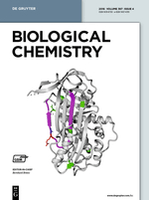
BIOLOGICAL CHEMISTRY
Unveiling the Secrets of Life Through Chemical ResearchBIOLOGICAL CHEMISTRY, published by WALTER DE GRUYTER GMBH, is a premier journal based in Germany focusing on the ever-evolving fields of Biochemistry, Clinical Biochemistry, and Molecular Biology. With a robust reputation reflected in its top quartile rankings (Q1) within both Biochemistry and Clinical Biochemistry categories, and a commendable Q2 ranking in Molecular Biology for 2023, this journal stands as a vital resource for researchers, professionals, and students alike. The journal spans a rich history dating back to 1881 and embraces contemporary scientific discourse, ensuring accessibility to critical findings and advances that shape the biological sciences. Although it is not an open-access journal, its impactful contributions and relevant insights continue to serve the academic community. With its ISSN 1431-6730 and E-ISSN 1437-4315, BIOLOGICAL CHEMISTRY remains committed to fostering a deeper understanding of chemical processes in biological systems, driving innovation and research excellence into the future.

FEBS Journal
Elevating Scientific Discourse in BiosciencesFEBS Journal is a prestigious, peer-reviewed publication dedicated to advancing the field of biochemistry, cell biology, and molecular biology. Published by WILEY in the United Kingdom, this journal boasts an impressive impact factor and ranks in the top quartile (Q1) across multiple relevant categories, including Biochemistry, Cell Biology, and Molecular Biology, reflecting its significant contribution to scientific research. With an ISSN of 1742-464X and an E-ISSN of 1742-4658, the FEBS Journal publishes original research and comprehensive reviews that push the boundaries of knowledge and innovation in the biosciences. As a vital resource for researchers, professionals, and students alike, the journal offers Open Access options, ensuring that cutting-edge discoveries are accessible to a broad audience. With a publication history converging from 2005 to the present and a robust emphasis on high-quality scholarly work, the FEBS Journal remains an essential platform for the dissemination of significant findings and advancements in the life sciences.

AMINO ACIDS
Where Biochemistry Meets InnovationAMINO ACIDS is a distinguished journal published by Springer Wien, specializing in the dynamic field of biochemistry, with a particular focus on the role of amino acids in biological processes. Since its inception in 1991, this journal has become a crucial resource for researchers and professionals, contributing valuable insights into the biochemical makeup and clinical applications of amino acids. With a commendable impact factor reflecting its high-quality publications, AMINO ACIDS consistently ranks in the Q2 category across biochemistry and organic chemistry domains as of 2023, demonstrating its significant influence within the scholarly community. The journal is indexed in Scopus and maintains strong rankings—59th in Organic Chemistry and 43rd in Clinical Biochemistry—highlighting its relevance and rigorous peer-review standards. While it currently does not offer open access options, the journal remains dedicated to advancing knowledge in both fundamental and applied biochemistry, making it an essential platform for disseminating cutting-edge research findings. For any academic seeking to explore the complexities of amino acids, AMINO ACIDS serves as an invaluable reference.
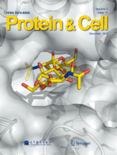
Protein & Cell
Shaping the Future of Scientific Collaboration and DiscussionProtein & Cell, published by Oxford University Press, is a distinguished international journal focusing on cutting-edge research in the fields of biochemistry, biotechnology, cell biology, and drug discovery. This open access journal, active since 2014, is dedicated to disseminating innovative findings that advance our understanding of protein functions and cellular processes, making it an essential resource for researchers, professionals, and students alike. With an impressive 2023 impact factor reflected in its Q1 ranking across multiple categories such as Biochemistry, Drug Discovery, and Cell Biology, 'Protein & Cell' stands at the forefront of scientific research, driving collaboration and discussion in the scientific community. Researchers can access the journal freely online, fostering a global exchange of knowledge and contributing to significant advancements in medicine and biotechnology. Located in the United Kingdom, the journal strives to be a pivotal platform for impactful research that influences future studies and applications.
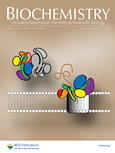
BIOCHEMISTRY
Unveiling the molecular mysteries of biochemistry.BIOCHEMISTRY is a premier academic journal published by the American Chemical Society, dedicated to advancing the field of biochemistry through the dissemination of high-quality research. With an ISSN of 0006-2960 and an e-ISSN of 1520-4995, this esteemed publication has been a vital resource since its inception in 1962 and continues to contribute to the scientific community, boasting a remarkable Q1 ranking in the field as of 2023. The journal's well-curated content emphasizes fundamental biochemical research, molecular genetics, and innovations in biochemical techniques, catering to a diverse audience of researchers, professionals, and students. Although not an open-access publication, BIOCHEMISTRY plays a crucial role in facilitating knowledge exchange and fostering academic collaboration globally, making significant contributions to the understanding of the biochemical processes that underpin life.

CELLULAR PHYSIOLOGY AND BIOCHEMISTRY
Transforming Understanding through Open ScienceCellular Physiology and Biochemistry is a premier Open Access journal published by the prestigious Cell Physiol Biochem Press GmbH & Co, dedicated to advancing research in the fields of physiology, biochemistry, and molecular biology. Since its inception in 1987 and transitioning to an Open Access model in 2013, the journal has established itself as a vital resource for the dissemination of high-quality research and reviews, showcasing innovative methodologies and groundbreaking findings in cellular processes. With an impressive ranking in the 2023 Scopus category as Q2 in Physiology and a robust percentile of 61, Cellular Physiology and Biochemistry is committed to fostering academic dialogue among researchers, professionals, and students alike. This journal not only provides unrestricted access to its articles, but also promotes the global sharing of knowledge, which is essential for the advancement of our understanding in these vital scientific areas. The journal's editorial team is dedicated to ensuring the highest standards of academic rigor and relevance, making it an indispensable addition to the libraries of those engaged in the life sciences.
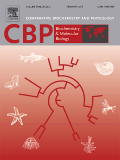
COMPARATIVE BIOCHEMISTRY AND PHYSIOLOGY B-BIOCHEMISTRY & MOLECULAR BIOLOGY
Transforming Understanding of Biochemical ProcessesComparative Biochemistry and Physiology B: Biochemistry & Molecular Biology, published by Elsevier Science Inc, is a premier journal dedicated to the field of biochemistry and molecular biology with a specific focus on comparative analyses across various biological systems. Since its inception in 1971, the journal has made significant contributions to our understanding of the biochemical and physiological processes that differentiate organismal function across animal and aquatic life. The journal holds a commendable position in the academic community, evidenced by its 2023 rankings, which place it in the second quartile for Animal Science and Zoology and Aquatic Science, and the third quartile for both Biochemistry and Molecular Biology as well as Physiology. Researchers and students can access cutting-edge research through this highly respected publication, which continues to influence the future of biological sciences. While currently not an Open Access journal, its rigorous peer-review process ensures that only high-quality articles are disseminated, further solidifying its role as a critical resource for professionals and academics alike seeking to explore the intricate relationships between biochemical structures and physiological functions.
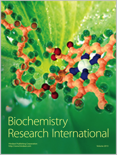
Biochemistry Research International
Catalyzing global communication in the realm of biochemistry.Biochemistry Research International is a prominent and dynamic journal published by Hindawi Ltd, dedicated to advancing knowledge in the field of biochemistry. With its Open Access model established since 2010, the journal provides unrestricted access to high-quality research, thereby fostering global communication among researchers and professionals. Operating out of the United States, Biochemistry Research International serves as a vital platform for disseminating cutting-edge findings in biochemistry and molecular biology, holding a respectable Q2 ranking in its category as of 2023. The journal's scope encompasses a wide array of topics including but not limited to biochemical processes, genetic engineering, and molecular interactions, making it an essential resource for students and seasoned researchers alike. With an impact factor reflective of its significance in the academic community, Biochemistry Research International continues to play an integral role in shaping the future of biochemistry research.
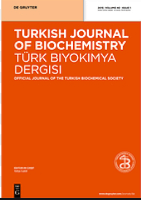
Turkish Journal of Biochemistry-Turk Biyokimya Dergisi
Advancing biochemistry through open dialogue.Turkish Journal of Biochemistry-Turk Biyokimya Dergisi, published by WALTER DE GRUYTER GMBH, is a pivotal open-access journal in the field of biochemistry that serves as a forum for innovative research and scholarly discourse. Since its inception in 2009 and transitioning to open access in 2015, this journal has gained recognition within the scientific community, reflecting a commitment to advancing knowledge in biochemistry and related medical sciences. With a diverse scope that encompasses molecular biology, clinical biochemistry, and the broader arena of biochemical studies, Turkish Journal of Biochemistry offers researchers, professionals, and students access to impactful studies and current developments. Although currently positioned in the lower quartiles in specific categories, the journal aims to enhance its visibility and engagement as it converges towards a promising future, fostering collaboration and knowledge exchange among biochemists across Turkey and around the globe. This journal is vital for anyone seeking to stay abreast of emerging trends and research findings in biochemistry.